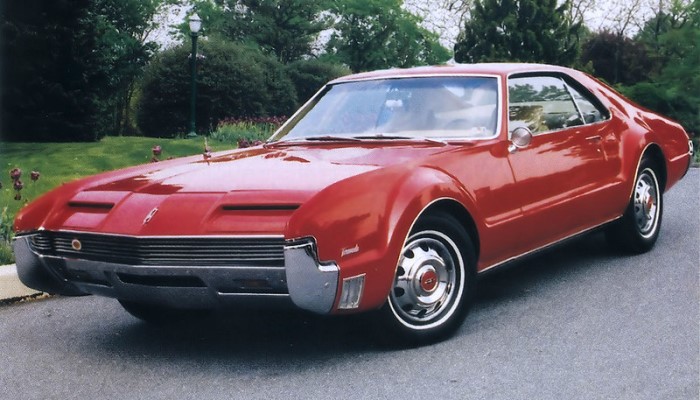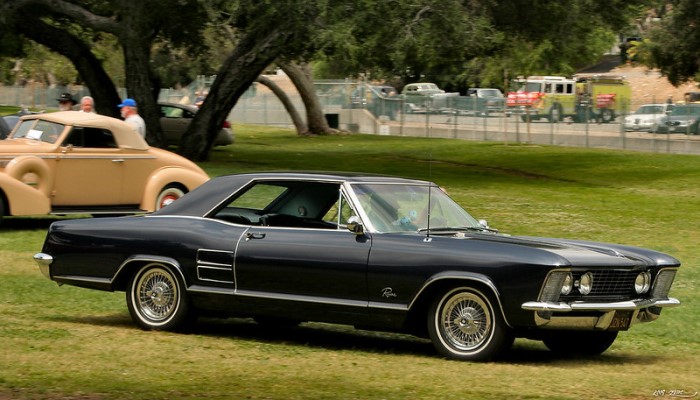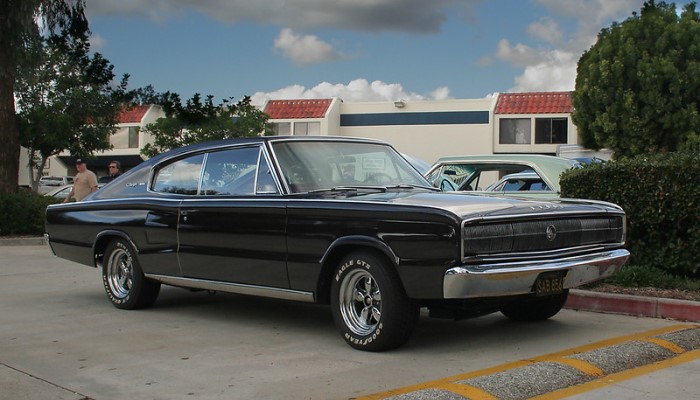Oldsmobile F-85 Jetfire
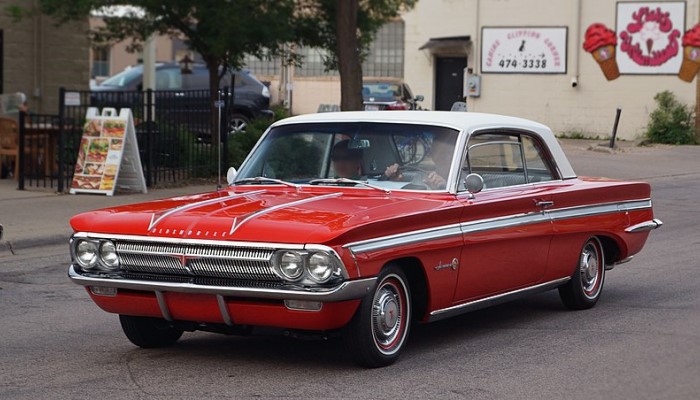
Photo: "1962 Oldsmobile Jetfire (29729987808)" by Greg Gjerdingen from Willmar, USA
There's Something Extra Under This Hood!
The words from the title represent an advertising slogan and at the same time show what the significance of this car is. If we talk about turbo technology, today it may seem like a fairly widespread topic. However, there was a time when this technology was a complete revolution in the world of motors, initiated by the Oldsmobile F-85 Jetfire.
Its beginnings date back to 1962, when the American giant General Motors introduced two new cars to its local market: the Chevrolet Corvair and the Oldsmobile F-85 Jetfire. Both will hit the market within a few weeks of each other, with the Oldsmobile F-85 Jetfire appearing first.
Later, other manufacturers such as BMW, Saab or Porsche would take greater advantage of this technology, leaving the automotive world to forget that the American manufacturer was the first to offer a production car equipped with a turbocharger.
Birth of Jetfire
For this first foray into turbo technology, the Detroit company chose the once prestigious, now defunct Oldsmobile. Within its range, it chose as a base its model, the Oldsmobile F-85, which was launched in 1961. This will be available in a variety of body styles; this version would use the two-door coupe body known as the Cutlass.
Although, technically, the base chosen did not represent any technological innovation, since it was a regular North American car of the time with rigid axle suspensions on both axles, drum brakes and a three-speed transmission.
It was presented as an interesting base because its V8 engine had a displacement of 215 cubic inches (3.5 L) and was made entirely of aluminum. Interestingly, this engine would later become the famous Rover V8 engine.
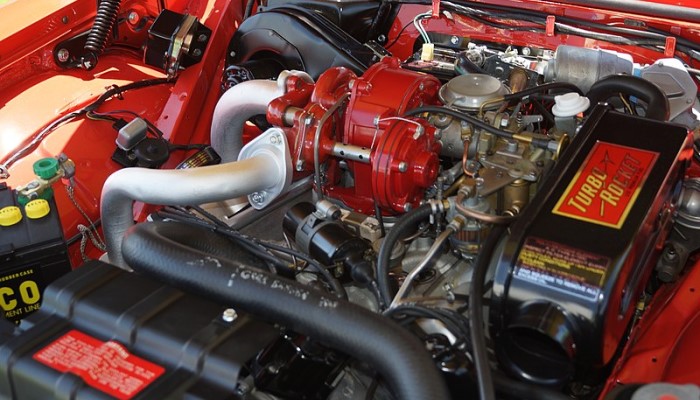
Photo: "1962 Oldsmobile Jetfire (27224201910)" by Greg Gjerdingen from Willmar, USA
It would be this section that would see a lot of work, as it would be conveniently modified to accommodate a turbocharger developed by North American specialist Cliff Garrett, as well as to support its high 10.25:1 compression ratio.
In the absence of modern electronic engine management systems, engineers developed a system that injected a fluid called "Turbo Rocket Fluid" into the intake to prevent self-detonation. This superfluid was a mixture of distilled water, methanol and a corrosion inhibitor.
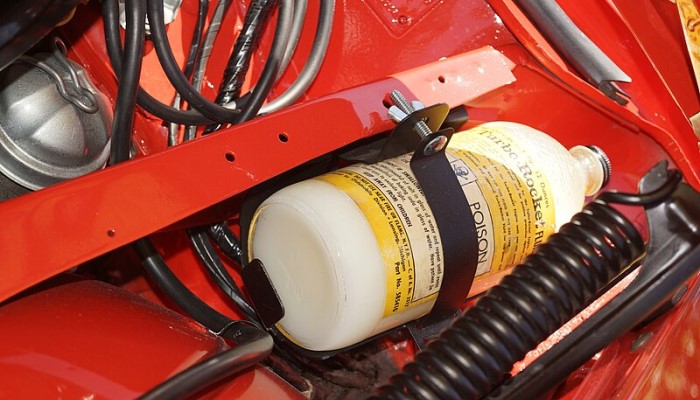
Photo: "1962 Oldsmobile Jetfire (26891727494)" by Greg Gjerdingen from Willmar, USA
They also devised a "bypass" system that prevented the turbo from starting if the fluid tank was empty, thus preventing the engine from being susceptible to any kind of damage. With the implementation of the turbo engine, this engine went from 185 horsepower in its normal version to a significant 215 horsepower.
This caused a noticeable improvement in the Jetfire's performance, stopping the stopwatch at 8.5 seconds from 0-60 mph (0-96 kph). With a maximum speed of 110 mph (177 kph), we can say that these are very respectable figures for a car of this characteristics.
Engine Specs
| Engine Type | V8 |
| Layout | Front engine, RWD |
| Displacement | 216 cid (3,532 cc) |
| Power | 218 hp |
| Power/Weight | 166 hp / Tone |
Performance
| 0-60 mph (0-96 kph) | 8,5 s |
| 0-100 mph (0-160 kph) | 28,2 s |
| 1/4 mile | 16,5 s |
| Top Speed | 107 mph (172 kph) |
Owners Often Complained...
Unfortunately, no major modifications have been made to the chassis, leaving the same build features as its siblings in the range. It was harshly criticized by the specialist press of the time, which highlighted the poor setup that did not match the performance of its engine.
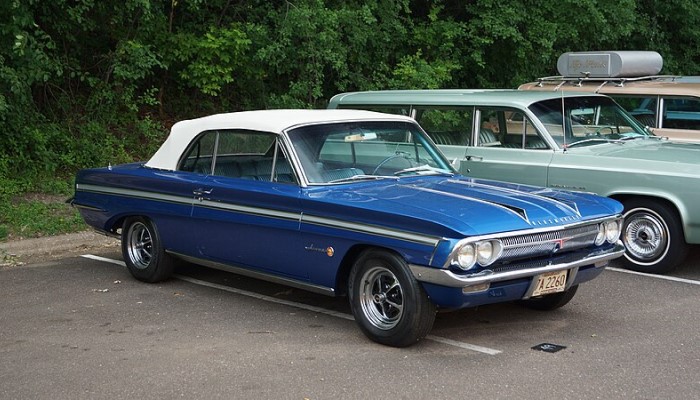
Photo: "1962 Oldsmobile Jetfire Convertible (42410209254)" by Greg Gjerdingen from Willmar, USA
Aesthetically, no modifications have been made other than minor changes, different seats or a pressure gauge to control the pressure of the turbo engine.
Owners of this car often complained about the lack of power, mostly because the owners themselves let the "Turbo Rocket Fluid" tank run out, causing the turbo to stop working for safety reasons.
Other times it was simply because the drivers drove so gently that the turbo never kicked in. Added to this is the fact that the F-85 Jetfire suffered from cooling problems, an endemic problem.
Commercial Failure
From a commercial standpoint, the F-85 Jetfire would be a failure because, in addition to the lack of mechanical reliability, the complexity of the safety mechanisms of the liquid injection system, and the high selling price at the time, which was about $300 more than its non-turbo counterpart, Oldsmobile would only sell 3,765 units in 1962 and 5,842 in 1963, ending its commercialization just two years after it hit the market.
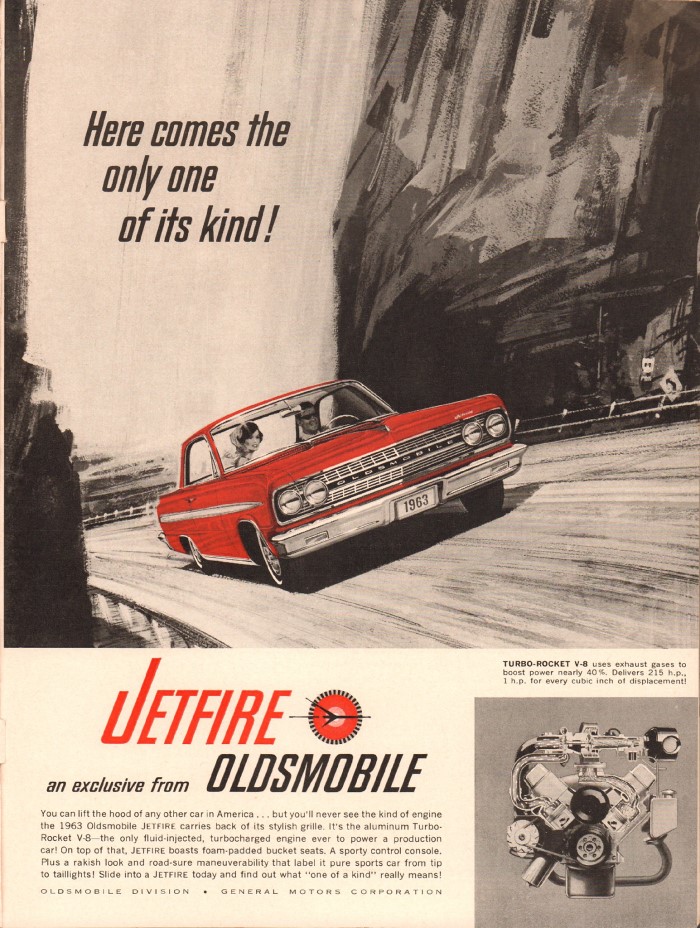
Photo: "1963 Oldsmobile Jetfire Advertisement Sports Car Graphic December 1962" by SenseiAlan
Later in 1965, General Motors offered Jetfire customers a contract to modify their cars at no charge. This modification consisted of eliminating the complex turbocharger system and replacing it with a conventional carburetor, intake and exhaust manifolds.
With this solution, many of the reliability and performance problems that plagued the car disappeared. Since the vast majority of owners have undergone this conversion, finding an Oldsmobile F-85 Jetfire with an original turbocharged V-8 today is especially difficult, and survivors are rare.
Today's Market Value
Due to its limited production run and the unique appeal of its turbocharged engine, the Jetfire is a relatively rare find. This rarity significantly influences its value, pushing it into a higher price bracket compared to other F-85 models.
The Oldsmobile F-85 Jetfire isn't just a car; it's a piece of automotive history, a testament to innovation and performance. Owning one comes with the responsibility of preserving this legacy.

Unique Car Zone Team
A group of several fans of everything that moves on four wheels, a few article creators, a couple of marketing strategists, designers, web developers, and lots of coffee.




